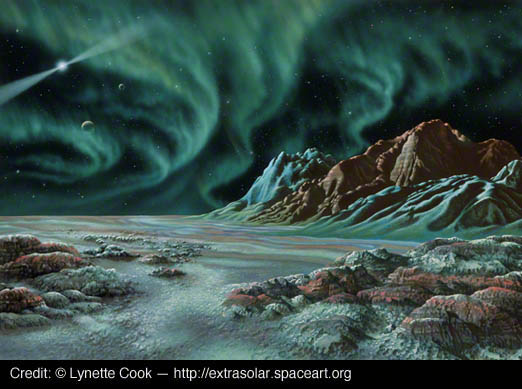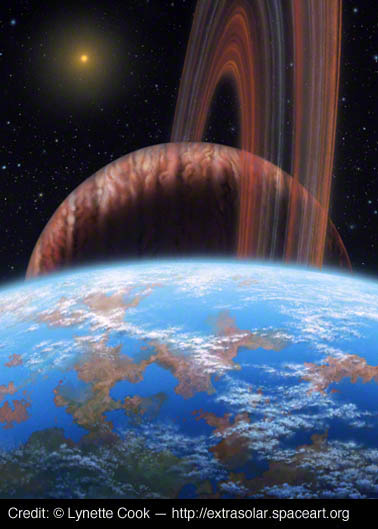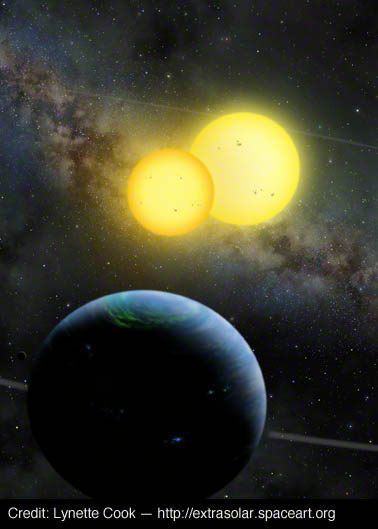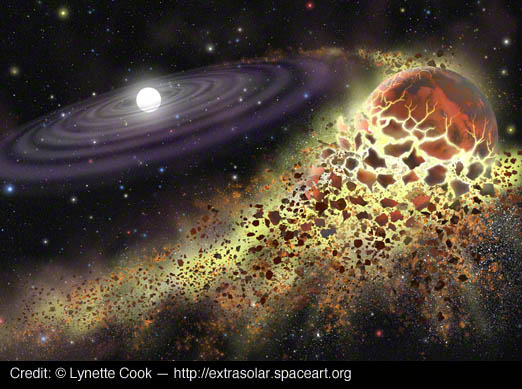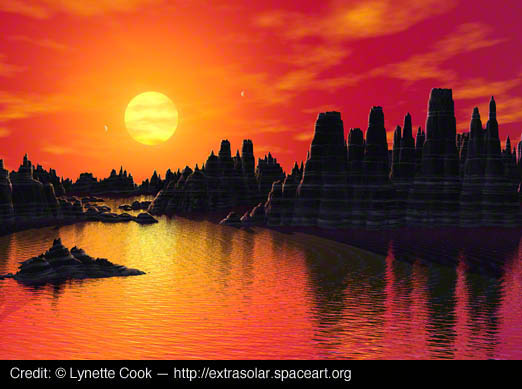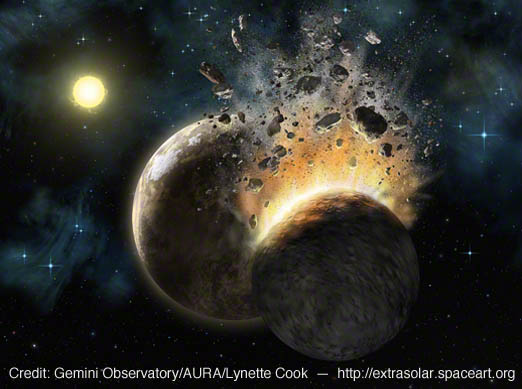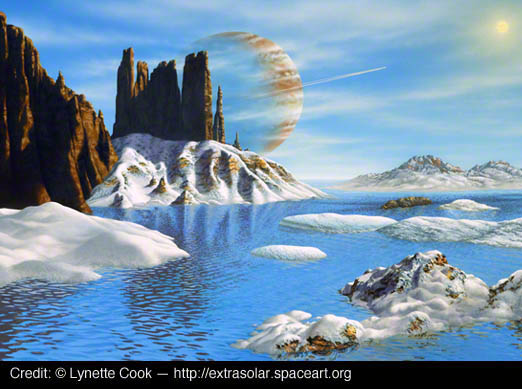Exoplanet Art: The Illustrations of Lynette Cook
BD+20 307
BD+20 307: "Who doesn't love a 'sister Earth' smashing into another world? Portraying the drama of the crash was a stimulating challenge for me," Cook said.
Transit of HD 209458
"Aside from being my most popular exoplanet art, it also confused some people. One individual in particular e-mailed me to ask what amazing data processing software I had used to get the photograph," Cook said. "He seemed not to understand the planet is so far away that it cannot be imaged with current technology with this kind of detail."
Pulsar Planets I
"I'd always wanted to paint an aurora filling the sky, so I was thrilled when discoverer Alex Wolszczan suggested I include one in this artwork of PSR B1257+12," Cook said.
HD 177830b and Moon
"While much attention is placed on finding another Earth, I find the possibility of Earth-like moons orbiting gas giants to be equally compelling," Cook said. "Imagine the beauty of those rings arching overhead if you were standing on the ocean shore!"
"Tatooine" Planet Kepler-35b
"Tatooine" Planet Kepler-35b: "This piece went through numerous adjustments as William Welsh and I iterated back and forth about orbit lines, lightning on the planet's dark side, the brightness of the aurora, and more," Cook said. "Attention to detail is what especially impresses me when I work with research astronomers, as all of us strive to 'get it right.'"
Binary Red Dwarf Star System
"Modeled after a planet astronomers hoped to find around CM Draconis, this scenario is indicative of what likely exists in great numbers throughout the universe: tidally locked, rocky worlds orbiting red dwarf stars," Cook said. "Here, the polar cap is located at the farthest location from the star and winds originate at the substellar point."
White Dwarf GD 362 Shredding a Planet
White Dwarf GD 362 Shredding a Planet: "Usually I am asked to create whole or mostly complete planets," Cook said. "This time I had to pulverize one, showing a white dwarf star ripping a world apart and incorporating its matter into Saturn-like rings."
Breaking space news, the latest updates on rocket launches, skywatching events and more!
Terrestrial Planet at 55 Cancri
Terrestrial Planet at 55 Cancri: "For my book 'Infinite Worlds' I created some images presenting what could exist, given current scientific data. This example shows a water world in the habitable zone at 55 Cancri," Cook said.
HD 23514
"It was fun to create a 'historical' piece showing a collision of two rocky bodies in the distant past," Cook said. "Such an event seems to explain the discovery of hot dust around this star."
HD222582b and Moon
HD222582b and Moon: "Geoff Marcy gave a 'thumbs up' to my watery landscape idea since this planet is in a highly elliptical orbit. It shows that frozen water existing on a nearby moon would melt as the two bodies approach the star and warm up," Cook said.

Michael Wall is a Senior Space Writer with Space.com and joined the team in 2010. He primarily covers exoplanets, spaceflight and military space, but has been known to dabble in the space art beat. His book about the search for alien life, "Out There," was published on Nov. 13, 2018. Before becoming a science writer, Michael worked as a herpetologist and wildlife biologist. He has a Ph.D. in evolutionary biology from the University of Sydney, Australia, a bachelor's degree from the University of Arizona, and a graduate certificate in science writing from the University of California, Santa Cruz. To find out what his latest project is, you can follow Michael on Twitter.


